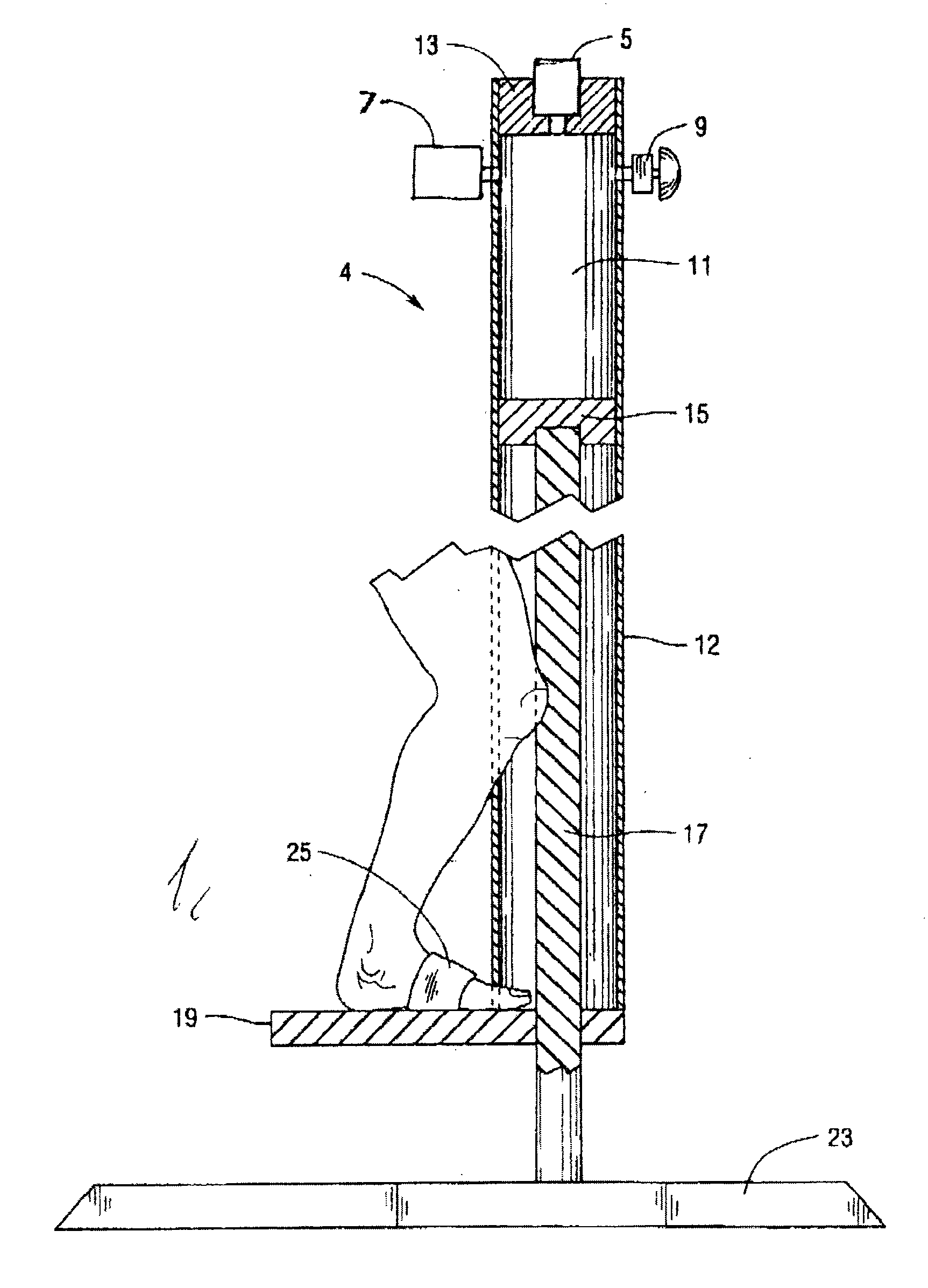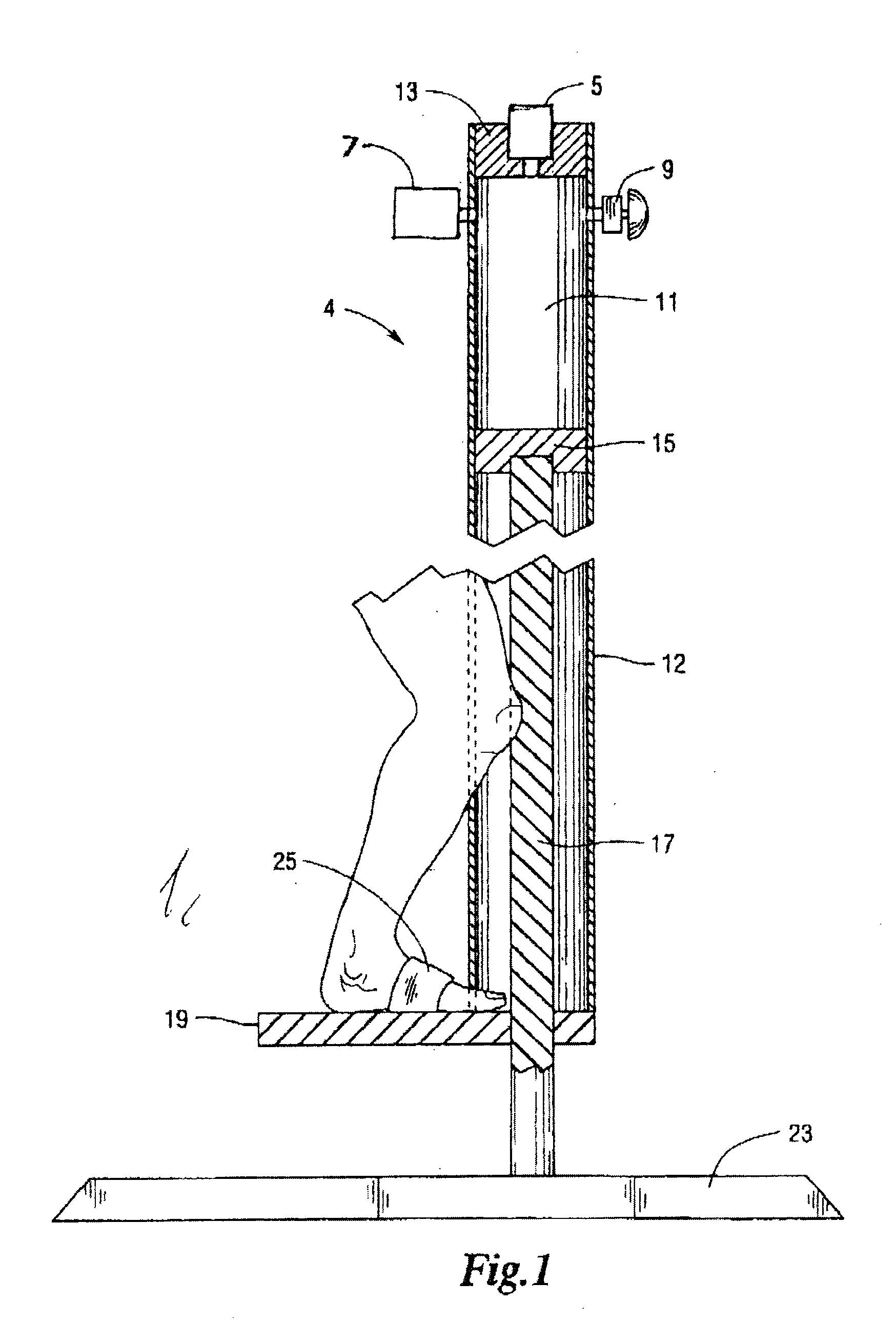Air management for enhancing pneumatic rebound training
a rebound training and air management technology, applied in the field of stationary versions of pneumatic rebound exercise devices, can solve the problems that the leakage of air from the system was not appreciated by users, and achieve the effect of enhancing aerobic and anaerobic conditioning
- Summary
- Abstract
- Description
- Claims
- Application Information
AI Technical Summary
Benefits of technology
Problems solved by technology
Method used
Image
Examples
Embodiment Construction
[0033]The FIGURE shows a schematic view of a basic form of the invention. An extendable air spring 4 is shown connected to a base / stand 23 by way of a piston rod 17 which is connected to piston 15. The piston sealingly slides inside cylinder barrel 12, which is sealingly closed off at the top by a cylinder head 13. An extendable air compression chamber 11 is thus defined and confined inside the cylinder barrel 12 and between the piston 15 and cylinder head 13. A foot strap 25 is connected to a footrest platform 19 which rigidly connects to the bottom of the cylinder barrel 12 and is shown being acted upon by a leg of an exercising user. The FIGURE also shows three different air valves opening into the air compression chamber 11: adjustable intake check valve 5, adjustable bleed valve 7 (a needle-type metering valve in the preferred embodiment), and a normally closed, push-type descent valve 9.
[0034]The basic operation is as follows: In the FIGURE, a leg of an exercising user is show...
PUM
 Login to View More
Login to View More Abstract
Description
Claims
Application Information
 Login to View More
Login to View More - R&D
- Intellectual Property
- Life Sciences
- Materials
- Tech Scout
- Unparalleled Data Quality
- Higher Quality Content
- 60% Fewer Hallucinations
Browse by: Latest US Patents, China's latest patents, Technical Efficacy Thesaurus, Application Domain, Technology Topic, Popular Technical Reports.
© 2025 PatSnap. All rights reserved.Legal|Privacy policy|Modern Slavery Act Transparency Statement|Sitemap|About US| Contact US: help@patsnap.com


